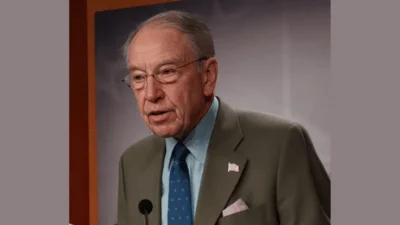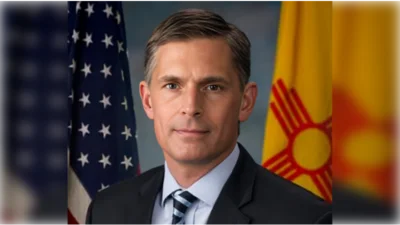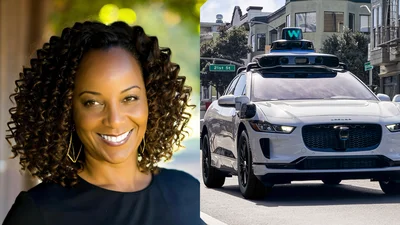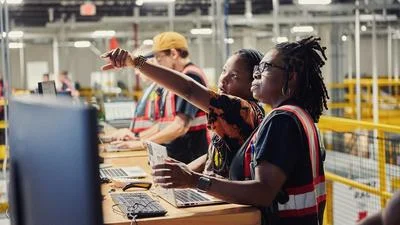The Congressional Record is a unique source of public documentation. It started in 1873, documenting nearly all the major and minor policies being discussed and debated.
“THE SILK ROAD: CONNECTING CULTURES, CREATING TRUSTS” mentioning the U.S. Dept of State was published in the Senate section on pages S6940-S6942 on July 17, 2002.
The publication is reproduced in full below:
THE SILK ROAD: CONNECTING CULTURES, CREATING TRUSTS
Mr. KENNEDY. Mr. President, I welcome this opportunity to commend the Smithsonian Institution and Yo-Yo Ma for this year's extraordinary Folklife Festival, ``The Silk Road: Connecting Cultures, Creating Trusts.'' The festival, which was held from June 26 through July 7 on The Mall, enabled hundreds of thousands to experience the art of 375 musicians, dancers, cooks and storytellers from the nations along the famous Silk Road trade routes through central Asia centuries ago.
In the aftermath of September 11, it is more important than ever to expand our understanding of those cultures. Yo-Yo Ma, with broad support from Secretary of State Colin Powell, the Aga Khan, and the Congressional Silk Road Caucus, and many others, helped us to embark on a journey of understanding and appreciation by bringing an incredible diversity of products and ideas that have emerged from central Asia to our Nation's front lawn--the Smithsonian Mall.
Yo-Yo Ma deserves special recognition for his unique ability to engage us all in an educational process that celebrates cultural differences. He is one of our Nation's preeminent musical artists. He is also an extraordinary cultural leader who has won the hearts of millions throughout the world with his outreach and education programs. He has used his incomparable talents to inspire us to learn about diverse peoples and cultures.
I commend all those who worked so effectively to make this year's Folklife Festival such an unequivocal success. It is a privilege to pay tribute to their efforts. I ask unanimous consent to include remarks at the opening ceremony of the Smithsonian Silk Road Project in the Record.
There being no objection, the material was ordered to be printed in the Record, as follows:
The Silk Road: Connecting Cultures, Creating Trust--Smithsonian
Folklife Festival Opening Ceremony, Washington, D.C., Remarks by
Smithsonian Institution Secretary, Lawrence M. Small
To all our distinguished guests, welcome to the Nation's Capital, welcome to the national mall, and the opening of the 36th annual Smithsonian Folklife Festival, The Silk Road: Connecting Cultures, Creating Trust.
We have assembled some 400 musicians, artists, and storytellers from more than 25 countries around the globe to 20 acres here on the mall, the nation's front yard.
And I must mention Kubla and Gobi who come from Texas, the two Bactrian camels, who have two humps. They have been specially trained to respond to commands in both English and Kazakh, which means you can now see the only double-humped, bilingual camels in the world.
The Smithsonian had plenty of help this year. This was truly an international effort, with many countries cooperating across borders for a common goal. As you look around, it's clear the goal has been accomplished. My congratulations to all involved, many are here today, many are in their home countries, we thank them all wherever they are.
The State Department has provided valuable assistance, and we have a special guest who will be here soon to officially open the Festival, the Honorable Colin Powell, Secretary of State.
The Smithsonian could not carry out its mission without the generous support of Congress, and we are always grateful for that. We thank Senator Brownback and Senator Biden, honorary co-chairs of the Folklife Festival. You'll hear from Senator Brownback soon.
We're very grateful for the help of Senator Kennedy; you'll hear from him in a moment. And thanks also to Congressman Pitts from the 16th district of Pennsylvania, and all the members of the Congressional Silk Road Caucus.
We also are grateful for the support of His Highness the Aga Khan, a true humanitarian whose caring and concern span the globe. We welcome the Honorable Fran Mainella, Director of the National Park Service.
A special thanks to Rajeev Sethi, the Festival scenographer, and head of the Asian Heritage Foundation, who collaborated closely with the Smithsonian in the design and the production of the Festival. And whose many wonders you see here on the mall. And, we would not be here without the incredibly generous contribution of time, talent, and resources of Yo Yo Ma. We're honored to be working with him and the organization he founded, the Silk Road Project. We're very thankful for their support. You will hear from Yo Yo Ma and the Silk Road Ensemble very soon.
Centuries ago, had you been a traveler on the storied trade route from Japan to Italy, you would have seen traders carrying textiles, tea, spices, silk, and much more from the Pacific to the Mediterranean. Perhaps most importantly, these traders carried art, music, literature, ideas, a way of life, a culture, from one land to the next. As a result, all the cultures were changed--and the change continues to this day.
The Silk Road lives not in the past but the present--influencing our lives every day.
This Festival will make abundantly clear why it is so important to continue open cultural exchange between diverse peoples and societies. Especially now.
I want to thank Richard Kurin, Richard Kennedy, Diana Parker, and all the staff at the Smithsonian Center for Folklife and Cultural Heritage for all their hard work in putting this together. This year, the Freer and Sackler galleries, The Smithsonian Associates, the Hirshhorn Museum and Sculpture Garden, the National Museum of Natural History, the National Museum of African Art, and the Smithsonian Magazine, have all picked up the Silk Road theme in their activities. Thanks to them also.
Later on in the program, Richard Kurin will tell you more about this remarkable event, including how many silk worms are needed to make one pound of silk, when is a 5-ton truck not a painting, what ``bushkazi'' is, and where polo comes from and when the polo matches start on the mall. Yes, I said polo.
____
Remarks by His Highness the Aga Khan at the opening of the Smithsonian
Folklife Festival--Washington D.C.
I am here to speak briefly about Central Asia. I wanted to share with you some of the reasons why the theme of the Smithsonian Folklife Festival this year is so important. As you know, Central Asia has been an area of considerable concern and instability for the world. Over the past decade, Central Asian countries have come into existence in difficult circumstances. Frontiers have been changed, ethnic groups have been divided, old traditions have been modified by the Soviet presence, and all this has caused considerable difficulty in looking ahead in that part of the world.
The period of deep change at the national and regional levels has prompted a search for new forces of stability. One that seems particularly important, I think, to the United States and to all of us, is the validation and vigorous promotion of human and cultural pluralism. Historically the Silk Route was a link that interconnected diverse aspects of human society and culture from the Far East to Europe, and did so on the basis of mutual interest. This suggests that for the new countries of Central Asia, the inherent pluralism of their societies can be regarded as an asset rather than a liability. In the wider sense, it can be a means of enlarging the frontiers of global pluralism. This is a goal with which we all can and should associate.
The remarkable work of Yo-Yo Ma has enthralled audiences, from all the countries of the Silk Route and beyond. By his leadership and imagination he has proved that the force of cultural pluralism to bind people is as necessary, powerful and achievable today as was the Silk Route in history.
It is my privilege and honor to be associated with the founder of the modern Silk Route, a cultural journey that inspires people to unity and joy through art.
____
Remarks by Yo-Yo Ma at the opening of the Smithsonian Folklife Festival
Your Highness, thank you for your kind words. The Silk road Project and I admire you for many reasons. In your cultural work you have created the Aga Khan Prize for Architecture, you have supported and founded Universities around the world, and you are doing important restoration work in cities like Cairo and now Kabul. We are honored to be working with you and the Aga Khan Trust for Culture on this year's Smithsonian Folklife Festival.
I would also like to single out someone who is both a friend of mine and of the Silk Road Project, the Senator from my home state of Massachusetts, Ted Kennedy. Senator Kennedy, thank you for your tireless work for arts organizations.
Secretary Powell, Senator Kennedy, Senator Brownback, Secretary Small, Your Highness, distinguished guests, welcome to the sights, sounds and scents familiar to over half the world's population. In the past, to experience all these elements you would need to travel by camel, by foot, by boat, and now, by plane. Today and for the next two weeks here on the National Mall we're providing the camels, the painted truck from Pakistan, and the rik-shaws, so all you need are your eyes, ears and imagination.
During twenty-five years of travel, I have been introduced to some of these sights, sounds and scents, and the many stories that accompany them.
Often the music you hear when I play the cello comes from these very stories. During this year's Smithsonian Folklife Festival, you can hear these stories for yourselves in encounters with four hundred artists from twenty-four countries.
Most of these artists will be strangers to you. Many of these artists are strangers to each other. We all meet strangers all the time. When the Silk Road Ensemble musicians and I first started playing together two years ago we had to find ways to trust each other onstage even though we had only just met. To me, the best way to create this trust is to share something precious--a personal story or belief. In music, this process of sharing deepens the harmonies, but more broadly this process starts a true dialogue and strengthens our common world heritage. This festival is about that dialogue.
In the end, the goal of the Smithsonian Center for Folklife and Cultural Heritage, the Aga Khan Trust for Culture, and the Silk Road Project is the same: to draw on the wisdom of all of our cultures to enrich our world one encounter at a time.
____
Remarks of Senator Edward Kennedy Opening Ceremony--Folklife Festival
Thank you, Mr. Kurin, for that generous introduction. It is an honor to be here this morning with all the exceptionally talented artists and the visionary sponsors of the Silk Road Project--the cornerstone of this year's Folklife Festival. The Folklife Festival is one of our capital city's most beloved traditions. Each year, it brings the customs and cultures of a unique region or ethnic population alive with music and dance, craft and culinary wonders.
I commend Lawrence Small, Secretary of the Smithsonian Institution. He is a dynamic leader of the Smithsonian, and I commend him for the success of this inspiring project.
It is a privilege to be here with Secretary of State, Colin Powell who is an effective advocate for the United States in these difficult times. He is skillful in the pursuit of peace across the world and I commend him for all he continues to do.
I also join in welcoming His Highness the Aga Khan who was an early supporter of the Silk Road Project. He is an impressive leader for our time and I commend all that he has done, especially in the field of education and cultural exchange. Now, more than ever, his voice is one that needs to be acknowledged and understood. We are honored to have him with us today.
It is especially important that the Smithsonian has embarked on this remarkable celebration of the cultural richness and diversity of the Silk Road countries. Centuries ago, the Silk Road trade routes gave birth to an unprecedented and extraordinary exchange of cultural and economic traditions. Today, more than ever, it is essential to remember the incredible diversity of products and ideas that have emerged from Central Asia.
The Mall is truly the Main Street of our nation's capital city. Today, it brings us exhibits and cultural performances representing the Silk Road countries, from Italy to India, Mongolia and Japan. There is something here for everyone to enjoy. And that is, after all, what the Folklife Festival is about. It is a starting point for exploration and education, and it is always about entertainment.
The Silk Road's artistic demonstrations and musical performances will bring the Mall to new life over the next several weeks.
We are especially privileged to have with us one of our nation's most preeminent artists. Yo-yo Ma is a musician who has won both critical and popular acclaim for his virtuosity. He has also won the hearts and minds of millions of people throughout the world, with his outreach and education projects.
From Sesame Street to Carnegie Hall, he has brought music to life, and life to music. He is the tireless and seemingly unstoppable energy behind youth orchestras across the country, and projects as musically diverse as the memorable
``Crouching Tiger, Hidden Dragon'' and his energetic Appalachian strings recordings.
He starred on David Letterman two nights ago, and today he is with us--on America's Main Street--to celebrate the beginning of the Folklife Festival. He inspires each of us to do all we can to embrace and celebrate diverse peoples and cultures through education and understanding.
After the tragic events of September 11th, it is more important than ever for each of us to understand and embrace new ideas and cultures. Today, we continue this journey of understanding with Yo-Yo Ma.
He has used his magnificent genius to bring the entire world closer together. He inspires people everywhere to seek peace and reconciliation, and he has done it all with his magical cello.
He is here with the performers of the Silk Road Ensemble and I am honored to introduce them now.
____
Remarks at the Opening of the Silk Road Festival--Secretary Colin L.
Powell, Smithsonian Folklife festival on the Mall, Washington, DC
Secretary Powell: Thank you very much, ladies and gentlemen. Thank you so very much, Richard, for that kind introduction, and my congratulations to the Smithsonian for putting on this 36th Annual Folklife Festival. With each year's Folklife Festival, the Mall becomes a living cultural exhibition, not only for the citizens of this city, but for the citizens of the world who come to Washington, D.C. In the words of former Smithsonian Secretary S. Dillon Ripley, ``The Festival brings the museum out of its glass case and into real life.''
I want to thank you also, Yo-Yo Ma and your Silk Road Project, to the Aga Khan for his Trust for Culture, to Lawrence Small of the Smithsonian, for all the wonderful work they have done to make this such an exciting and important event. And I am very proud that the State Department had such a role to play in it, and some of my leaders from the Department who had a role to play are here. Under Secretary of State Charlotte Beers and Assistant Secretary of State Beth Jones, and I think Assistant Secretary of State Pat Harrison are here, and they also are deserving of your recognition.
In fact, we did have some diplomatic challenges in making this happen. The two yurts that are here, tents that you will see in due course, they had to be custom made to conform to American laws for access to the handicapped. And so our embassy in Kazakhstan worked closely with the Kazakh Government to make sure they were up to standard--and then helped ship them here in time for this Festival. So we are not only culturally pure, we are OSHA-pure as well. I want you to know that.
We have seen so many talented people this morning, and we have had such wonderful speakers. And I, as always, enjoyed Yo-Yo Ma. But Yo-Yo, I have to say the throat singers might have had a slight edge on you. It was marvelous, and I haven't heard throat singing like that since my last congressional appearance. And it was before the Senate, not the House.
But what these artists have done for you this morning so far is they have painted a marvelous picture of the old Silk Road and the central place that the Silk Road played in our own history, our own culture, and in our own civilization.
Listening to this morning's speakers, you can almost see Marco Polo trekking eastward toward lands unknown to Europeans, or hear the sounds of a merchant caravan heading west with its cargo of silks and spices.
The Silk Road of old was the main link between the civilizations of the east, Central Asia, and Europe. From Europe, the products and ideas of Central and East Asia then spread to the New World of the Americas. All of our peoples were enriched by the exchange of goods, the exchange of ideas, and the exchange of cultures.
But the Silk Road is more than a subject for magazines and museums. It is more than an image of past glories. The nations of Central Asia are once again joining the nations at either end of the Silk Road on a path to a better future for all. There is far to go, and the region's security, stability, and prosperity depend on critical economic and political reforms. But the Silk Road is once again a living reality, as the over 350 artists and craftspeople from 20 nations here testify.
Now, in our new age of globalization, we are restoring the linkages and the interchanges that once made the Silk Road so rich and so vital. We have been making up for lost time. Our political, economic, diplomatic, and security contacts have increased with all the nations along the central part of the Silk Road, boosted by our cooperation especially as we came together in the campaign against terrorism following 9/11 last year.
But even more important, our cultural and institutional ties have also grown. We are once again exchanging ideas and learning about cultures with all of the countries and peoples along the Silk Road.
The links between our peoples are the most vital and enduring elements of our ties. Festivals like the Smithsonian Silk Road Festival play a major role in helping us get reacquainted and start learning from each other once again. As the theme of this exhibition reminds us, it's all about
``Connecting cultures and creating trust.''
This Festival, like the future, stretches ahead before us. So without further delay, and with sincere thanks for your patience, let me now light the lamp that will allow us to embark on our journey along the Silk Road. Thank you very, very much.
____
Mr. CRAPO. Mr. President, I was unavailable to vote on the afternoon of July 10, and all of July 11, 12, 15 and 16 due to the death of my mother. Had I been able I would have voted as follows: Rollcall No. 169--``yea''; Rollcall No. 170--``yea''; Rollcall No. 171--``yea''; Rollcall No. 172--``yea''; Rollcall No. 173--``yea''; Rollcall No. 174--``yea''; Rollcall No. 175--``yea''; Rollcall No. 176--``yea''; Rollcall No. 177--``yea''.
____________________








